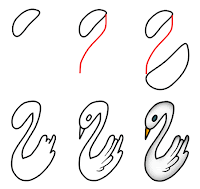Recently I read a very useful article at 'NY times' about 'When to Buy Your Child a Cellphone' which is full of advice from experts. I am writing only experts of this post, but if you want to read full post, check the source link at the bottom of the post.
There is no age that suits all children, developmental psychologists and child safety experts say. It depends on the child’s maturity level and need for the phone, and the ability to be responsible for the device — for example, keeping it charged, keeping it on and not losing it. Instead of giving in to the claim that “everyone else has one,” parents should ask why the child needs one, how it will be used and how well the child handles distraction and responsibility.
“You need to figure out, are your kids capable of following your rules?” about using the phone, said Parry Aftab, executive director of the child advocacy group Wired Safety.
Ruth Peters, a child psychologist in Clearwater, Fla., said most children were not ready for their own phones until age 11 to 14, when they were in middle school. Often, that is when they begin traveling alone to and from school, or to after-school activities, and may need to call a parent to change activities at the last minute or coordinate rides.
“Most parents want to give a cellphone to keep them safe, but that ignores the great majority of uses that kids are using cellphones for,” said James P. Steyer, the chief executive of the nonprofit group Common Sense Media, which rates children’s media. He said that with those added features can come addictive behavior, cyberbullying, “sexting” (sending nude photos by text message), cheating in class and, for older teenagers, distracted driving.
Dr. Peters suggested that parents avoid buying children younger than 13 a phone with a camera and Internet access. “If they don’t have access to it, it’s just cleaner,” she said.
For children, it is all about social life and wanting to impress peers. The Pew study found that half of 12- to 17-year-olds sent 50 text messages a day and texted their friends more than they talked to them on the phone or even face to face.
Patricia Greenfield, a psychology professor at the University of California, Los Angeles, who specializes in children’s use of digital media, cautioned that at younger ages, parents might miss out on what was going on with their children because of a cellphone.
“Kids want the phone so that they can have private communication with their peers,” she said. “You should wait as long as possible, to maintain parent-child communication.”
Source: When to Buy Your Child a Cellphone






